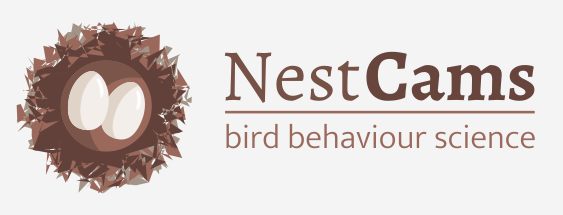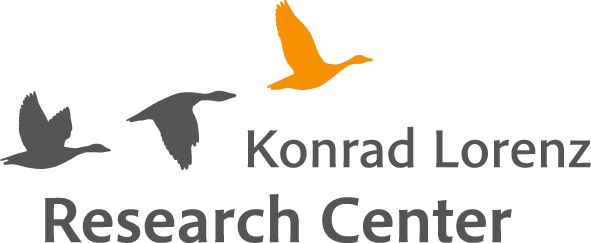
Fischerau 31
4645 Grünau im Almtal
NestCams
In this project, citizen scientists studied the breeding behaviour of greylag geese and northern bald ibises. The project was run by scientists of the Konrad Lorenz Research Center (Grünau im Almtal, Upper Austria).
Since its foundation in 1973, the Konrad Lorenz Research Center (KLF, a core facility of the University of Vienna) has been engaged in research on avian social systems. Three bird species in particular are used as models: greylag goose, raven and northern bald ibis.
What was it about?
This project investigated the relationship between behavioural patterns and breeding success in two bird species (greylag goose, northern bald ibis). The selected species use different strategies: greylag geese are long-term monogamous, the female alone incubates the eggs, and the goslings are precocial, meaning that they are relatively mature and mobile from the moment of hatching onwards.
In the case of the seasonally monogamous northern bald ibis, both pair partners care for the nest and the hatchlings are altricial, meaning that the young hatch featherless and unable to walk on their own. They require parental care for feeding and stay in the nesting area until fledging.
Aims of the NestCams project
Together with citizen scientists, researchers aimed at finding out why some pair-partners within a flock are more successful than others in breeding and raising the offspring
Who could participate?
To participate in the NestCams project participants needed a computer with internet access.
How could one participate?
Participation was possible on the online platform Zooniverse.org in English and German and without registration. In order to be able to get in contact with the project members in the "Talk", registration was necessary.
News:
Update 30.03.2021: The goal of 15000 videos has been reached! More videos are now ready for evaluation - the more videos, the more representative the data set will be. Many thanks for the support!
March 2021: Already 41,000 short videos of nesting greylag geese and northern bald ibis could be coded with the help of more than 5,500 citizen scientists! Greylag goose videos from the 2018 breeding season have all been analysed and those from the 2019 breeding season have been uploaded. The goal is to complete at least 15,000 videos in March and April 2021. To say thank you, small prizes will be raffled among all registered participants.
Publications
Rittenschober J., V. Puehringer-Sturmayr, & D. Frigerio, The relevance of a digital platform for the citizen science project NestCams, PoS(ACSC2020) (2021) Sissa Medialab. Proceedings of Science (PoS) Vol. 393. DOI: https://doi.org/10.22323/1.393.0009
Rittenschober, J., Kleindorfer, S. and D. Frigerio - The project design influences the quality of contributions in an online Citizen Science project - PoS(ACSC2023) (2023) Sissa Medialab. Proceedings of Science (PoS) Vol. 442. DOI: https://doi.org/10.22323/1.442.0014
The Konrad Lorenz Research Centre on Social Media

This project fulfilled version 1.1 of the quality criteria for citizen science projects on Österreich forscht.
- animals

